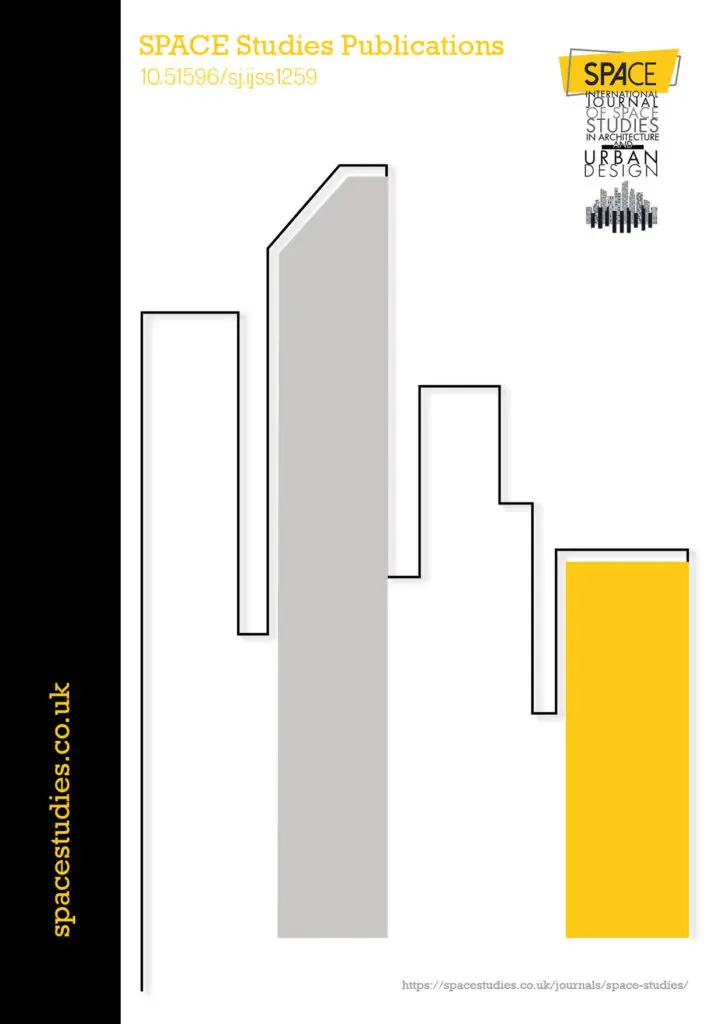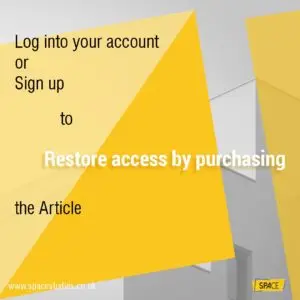Endnotes
This paper has been presented at the Conference “AGORA CAUMME 2020 – Mediterranean: Between Expansion and Regeneration” and selected by the Conference Scientific Committee to be published in the SPACE International Journal of Space Studies in Architecture and Urban Design. Peer review under the responsibility of the scientific committee of AGORA CAUMME 2020.
References
Arieff, A. (2011). It’s Time to Rethink ‘Temporary’. Retrieved 21 July 2019, from https://opinionator.blogs.nytimes.com/2011/12/19/its-time-to-rethink-temporary/
Armada, Jacqueline, “Sustainable Ephemeral: Temporary Spaces with Lasting Impact” (2012). Syracuse University Honors Program Capstone Projects. https://surface.syr.edu/cgi/viewcontent.cgi?article=1101&context=honors_capstone
Barton, G. (2013). Post Pop-Up Architecture: Do All Buildings Have Lifespans? – Architizer Journal. Retrieved Feb. 12 2019, from: Architizer. Available at: https://architizer.com/blog/practice/details/unbuildings/
Bertino, G., Fischer, T., Puhr, G., Langergraber, G., & Österreicher, D. (2019). Framework Conditions and Strategies for Pop-Up Environments in Urban Planning. Sustainability, 11(24), 7204.
Bishop, P. and Williams, L., 2012. The temporary city. London: Routledge. ISBN: 9780415670562
Block, I. (2018). Micro homes in pipes designed to ease Hong Kong’s housing crisis. Retrieved July 24, 2019, from: https://www.dezeen.com/2018/01/16/opod-james-law-cybertecture-hong-kong-micro-apartments-concrete-pipes-low-cost-housing-crisis/
Block, I. (2019). Level Up street pavilion provides multi-level hang-out space for Rijeka. Retrieved July 24, 2019, from: https://www.dezeen.com/2019/02/20/level-up-street-pavilion-rijeka/
Boer, R. and Minkjan, M. (2016). Why the Pop-up Hype Isn’t Going to Save Our Cities – Failed Architecture. [online] Failed Architecture. Available at: https://failedarchitecture.com/why-the-pop-up-hype-isntgoing-to-save-our-cities/ [Accessed 16 May 2018].
Careri, F. (2002) Walkscapes. El andar como práctica estética. Barcelona: Gustav Gili. ISBN: 788425225987
Ciantar S., (2016). The Ephemeral Nature of Architecture. Retrieved October 15 2018, from http://sacesmalta.com/blog/2016/8/16/the-ephemeral-nature-of-architectureS
Claude J., Claude C, (2016). The Floating Piers. Retrieved July 24 2019, from http://archive.thefloatingpiers.com/#introduction https://christojeanneclaude.net/projects/the-floating-piers?view=info
De Girolamo, Flavia. (2013). “Living Landscapes -Landscapes for Living Paesaggi Abitati Time and Regeneration: Temporary Reuse in Lost Spaces.” Planum. The Journal of Urbanism.
Zuo, J., Daniel, L., Soebarto, V. (eds.), Fifty years later: Revisiting the role of architectural science in design and practice: 50th International Conference of the Architectural Science Association 2016, pp. 279–288. ©2016, The Architectural Science Association and The University of Adelaide. https://anzasca.net/wp-content/uploads/2016/12/29-1179-279-288.pdf
Elrahman, A.S.A., (2016). Tactical Urbanism “A pop-up Local change for Cairo’s built environment”. Procedia-Social and Behavioral Sciences, 216, pp.224-235.
Ferreri, M., (2015). The seductions of temporary Urbanism. Ephemera: Theory & Politics in Organization 15(1), pp.181–191.
García, L. (2017). From void to opportunity. Procedia Environmental Sciences, 37, 637-646.
Harris, E., 2015. Navigating Pop‐up Geographies: Urban Space–Times of Flexibility, Interstitially and Immersion. Geography Compass, 9(11).
Harris, E., & Nowicki, M. (2015). Cult of the temporary: is the pop-up phenomenon good for cities?. Retrieved July 21 2019, from https://www.theguardian.com/cities/2015/jul/20/cult-temporary-pop-up-phenomenon-cities
Haydn, F. (2006). Temporary urban spaces: concepts for the use of city spaces. R. Temel (Ed.). Basel: Birkhäuser. ISBN: 9783764374600
Haydn, F., & Temel, R. (2006). Glossary. In F. Haydn & R. Temel (eds.), Temporary urban spaces: Concepts for the use of city spaces (pp. 8-17). Basel, Switzerland: Birkhäuser. ISBN: 9783764374600
Kronenburg, R., (2004). Flexible Architecture: the cultural impact of responsive building. In Open Building and Sustainable Environment. The 10th Annual Conference of the CIB W104 Open Building Implementation.
Lehtovuori, P. (2012). Temporary uses as means of experimental urban planning. Serbian Architectural Journal, 4(1), 29-54.
Limthongsakul, S., Nitivattananon, V., & Arifwidodo, S. D. (2017). Localized flooding and autonomous adaptation in peri-urban Bangkok. Environment and Urbanization, 29(1), 51-68.
Minkjan, M. (2014). Vacancy Studies: Designing Temporariness – Failed Architecture. [online] Failed Architecture. Available at: https://failedarchitecture.com/vacancy-studies-designing-temporariness/ [Accessed 22 Nov. 2018].
Oswalt, P., (2014). Urban catalyst. Berlin: DOM publishers. ISBN: 9783869222615
Perera, Aruninta, A. (2005, June). Managing publicly owned urban vacant land redevelopment projects in Bangkok, Thailand. In 42nd FLA World Congress theme: Urban Growth and Decline.
St Hill, C. (2019). This is Temporary: how transient projects are redefining architecture. Routledge. ISBN: 9780429346545 https://doi.org/10.4324/9780429346545
Stinson, L., (2019). Tiered platforms create nifty street furniture. Curbed. Retrieved July 24 2019, from https://www.curbed.com/2019/2/21/18234143/public-furniture-street-rijeka-croatia.
Taylor-Foster, J., (2016). The Floating Piers Opens on Lake Iseo Allowing Visitors to “Walk on Water.” Retrieved July 24 2019, from https://www.archdaily.com/789793/the-floating-piers-opens-on-lake-iseo-italy-christo
Temel, R. ed., (2006). Temporary urban spaces: concepts for the use of city spaces. Basel: Birkhäuser. ISBN: 9783764374600
Timofeeva, Tolkachova, Bartov, (2014). Pop-up KYIV. Retrieved December 2017, from https://issuu.com/ponomarova/docs/projects_book_all
Transik, R. 1986. Finding Lost Space: Theories of urban design. ISBN: 9780471289562
UKEssays. (November 2018). Architecture And Ephemeral Structures Cultural Studies Essay. Retrieved from https://www.ukessays.com/essays/cultural-studies/architecture-and-ephemeral-structures-cultural-studies-essay.php?vref=1
Weththasinghe, A., & Wijesundara, J. (2017). Reclaiming Traffic Influenced Urban Residual Spaces for the Public in Colombo, Sri Lanka. Cities People Places: An International Journal on Urban Environments, 2(1).
Disclosure Statement
No potential conflict of interest was reported by the author(s).
Biographical Notes on Contributors
Nouran Zakaria
Rita Pinto De Freitas



